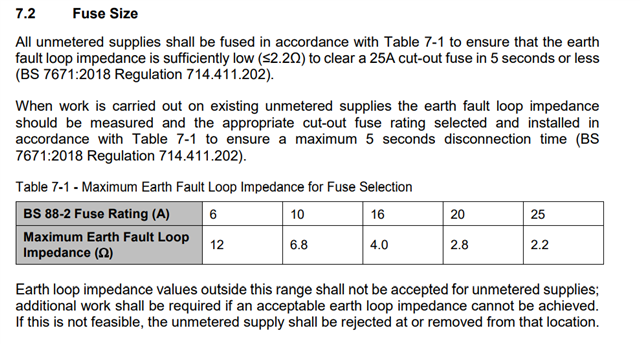Hi, long time no posting, busy busy I'm afraid.
Concerning supply Ze which is usually quoted as 0.35 max for TNCS, 0.8 for TNS.
On unmetered highway supplies UKPN says
Makes perfect sense as the fuse size (time and Ia) dictates the max Ze.
So where did the .35 and 0.8 come from, or go to in this case.
Kind regards
Marc

